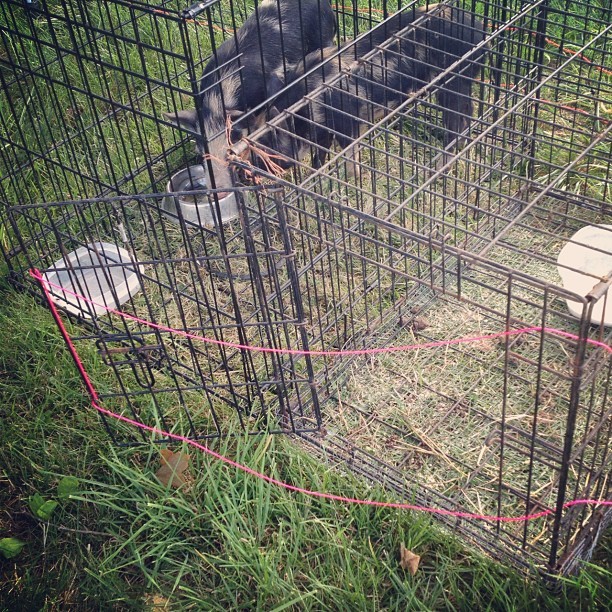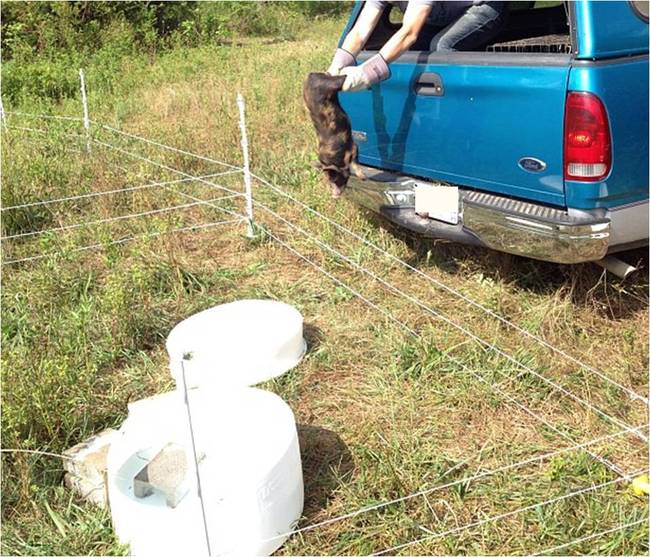 Piglets running between the pond and the woodlot. Can you spot the little devils?
Piglets running between the pond and the woodlot. Can you spot the little devils?
By Tuesday the boar piglets had spent two days and two nights on the loose. We were still worried about them getting eaten, but at least we knew they were alive. We had seen them in the distance on numerous occassions. It was like those Western movies where the cowboys ride off in the distance. Only this time it was our boar piglets, shadows on the horizon, rapidly propelling themselves along with their impossibly short legs.
At some point we got relatively comfortable with the whole situation. These pigs knew a whole lot more about what they were doing than we did. They were loving it. So we decided to let them come to us. Rather than seek them out we set up a dog crate and put some feed and water in it. We placed it next to the sows and tied some string to the top and bottom. The string extended out and was placed behind the well-house. The crate door would be pulled shut and the piglets would be ours again. At least that was the plan.


